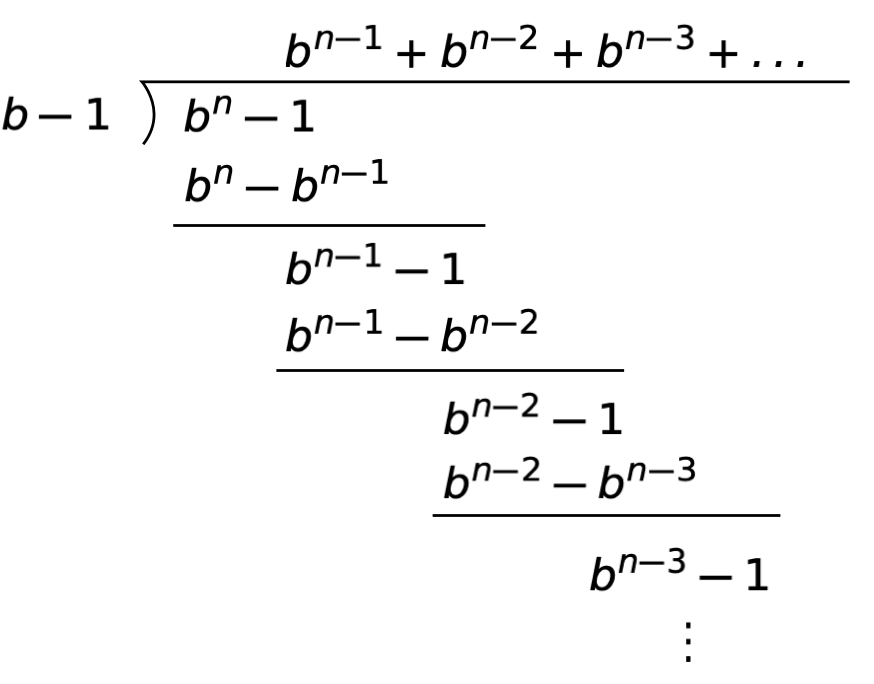A factoring trick
May 17, 2024 at 6:23 PM by Dr. Drang
In Matt Parker’s latest video, he gives two proofs to show that if you
- choose any number,
- raise it to any power, and
- subtract one,
you’ll get a number that is a multiple of your original number minus one. In words, this seems magical; in equation form,
not so much. Certainly you know that
because that comes up so often. You may also remember from algebra class that
So it isn’t tremendously surprising to hear that is a factor no matter what is. But what’s the proof?
Matt’s first proof is to notice that is a solution to
for any . Therefore, has to be one of the factors of . He considers this a rather prosaic proof, and quickly moves on to the fun one, which involves expressing the numbers in different bases. It is a cute proof, and you should watch the video to see it.
But I wanted to go back to
and see if there’s a solution for something that works for every . Obviously there is, or I wouldn’t have written this post. And you’ve probably already guessed what that solution is, but let’s figure it out systematically.
We’ll set up the polynomial division of by and run it out for a few steps:

As you can see, after Step in the process, the difference (i.e., the expression under the horizontal line) is
So after steps, the difference will be , which means that the last term in the quotient will be and there will be no remainder. Therefore, something is
which is easier to remember than I would have guessed.

